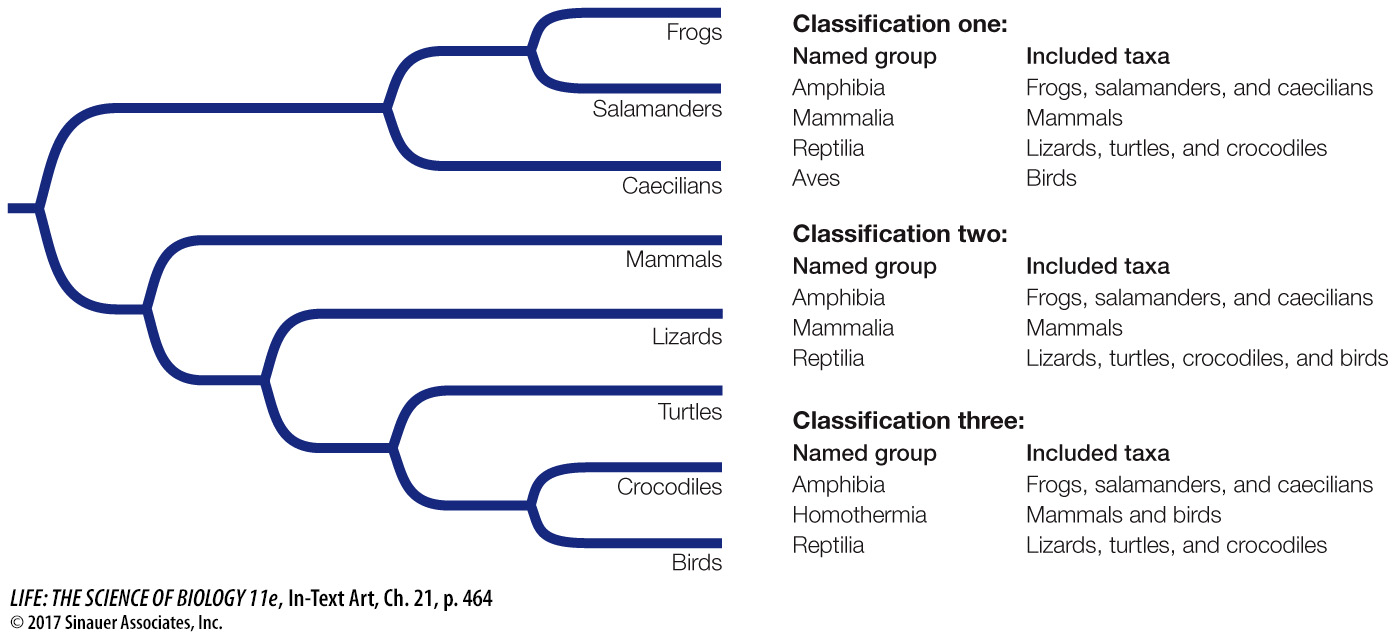recap
21.4 recap
Biologists organize and classify life by identifying and naming monophyletic groups. Several sets of rules govern the use of scientific names so that each species and higher taxon can be identified and named unambiguously.
learning outcomes
You should be able to:
Use a phylogeny to build a classification for a group of organisms.
Analyze a classification and phylogenetic tree to identify monophyletic, polyphyletic, and paraphyletic groups.
Consider the phylogeny and three possible classifications shown below.

1.
Which of these classifications contain a paraphyletic group?
Classification One (the group Reptilia is paraphyletic if the birds are excluded).
2.
Which of these classifications contains a polyphyletic group?
Classification Three (the group Homotheria is polyphyletic).
3.
Which of these classifications is consistent with the goal of including only monophyletic groups in a biological classification?
Classification Two.
Now that we have seen how evolution occurs and how phylogenies can be used to study evolutionary relationships, we are ready to consider the process of speciation. Speciation is what leads to the branching events on the tree of life, and it is the process that results in the millions of species that constitute biodiversity.